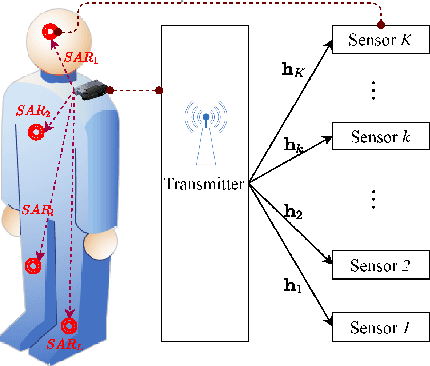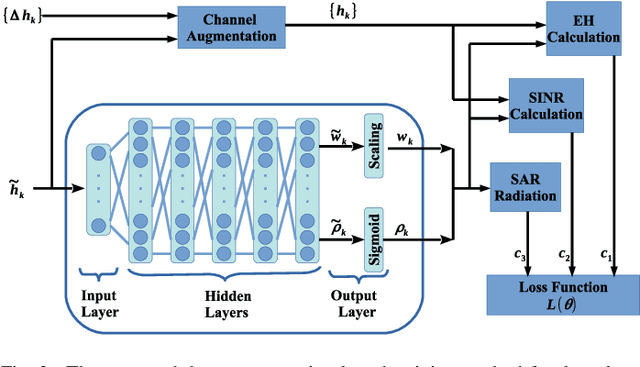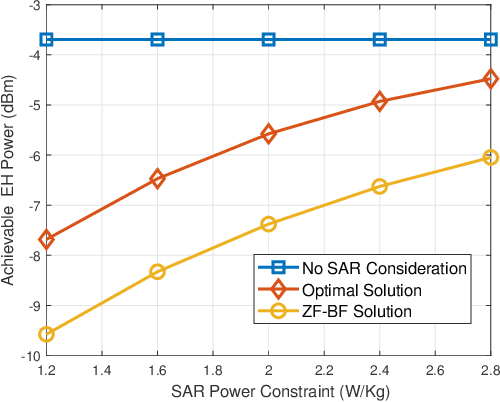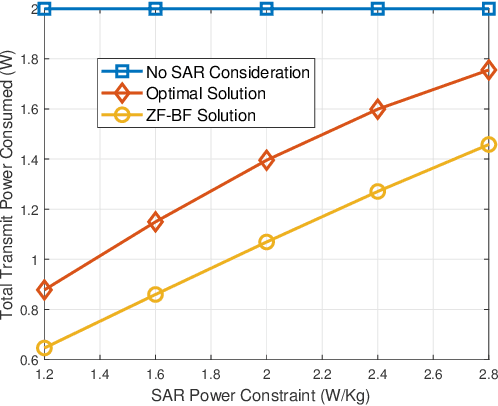Design and Analysis of SWIPT with Safety Constraints
Paper and Code
Nov 20, 2021



Simultaneous wireless information and power transfer (SWIPT) has long been proposed as a key solution for charging and communicating with low-cost and low-power devices. However, the employment of radio frequency (RF) signals for information/power transfer needs to comply with international health and safety regulations. In this paper, we provide a complete framework for the design and analysis of far-field SWIPT under safety constraints. In particular, we deal with two RF exposure regulations, namely, the specific absorption rate (SAR) and the maximum permissible exposure (MPE). The state-of-the-art regarding SAR and MPE is outlined together with a description as to how these can be modeled in the context of communication networks. We propose a deep learning approach for the design of robust beamforming subject to specific information, energy harvesting and SAR constraints. Furthermore, we present a thorough analytical study for the performance of large-scale SWIPT systems, in terms of information and energy coverage under MPE constraints. This work provides insights with regards to the optimal SWIPT design as well as the potentials from the proper development of SWIPT systems under health and safety restrictions.
 Add to Chrome
Add to Chrome Add to Firefox
Add to Firefox Add to Edge
Add to Edge